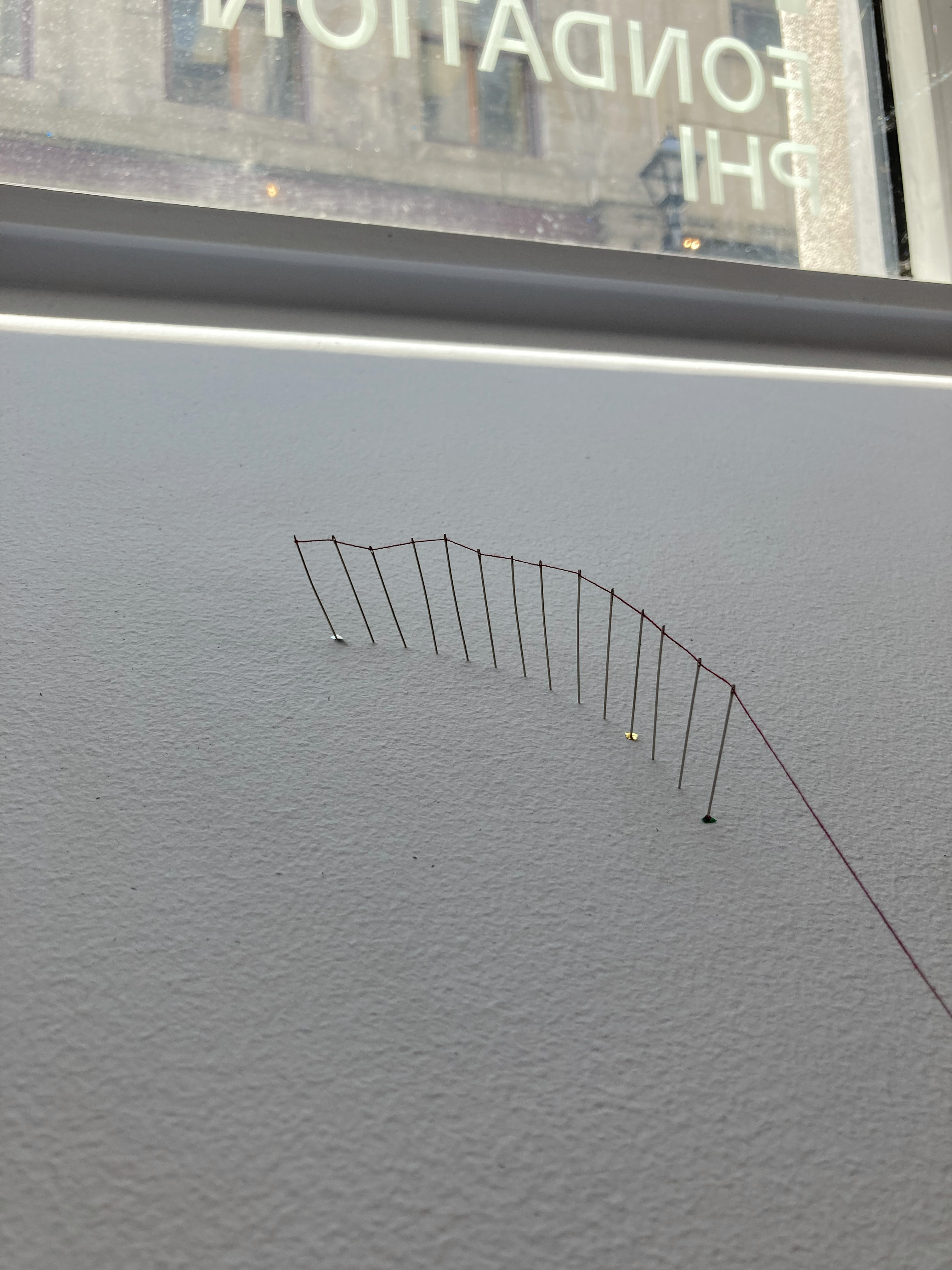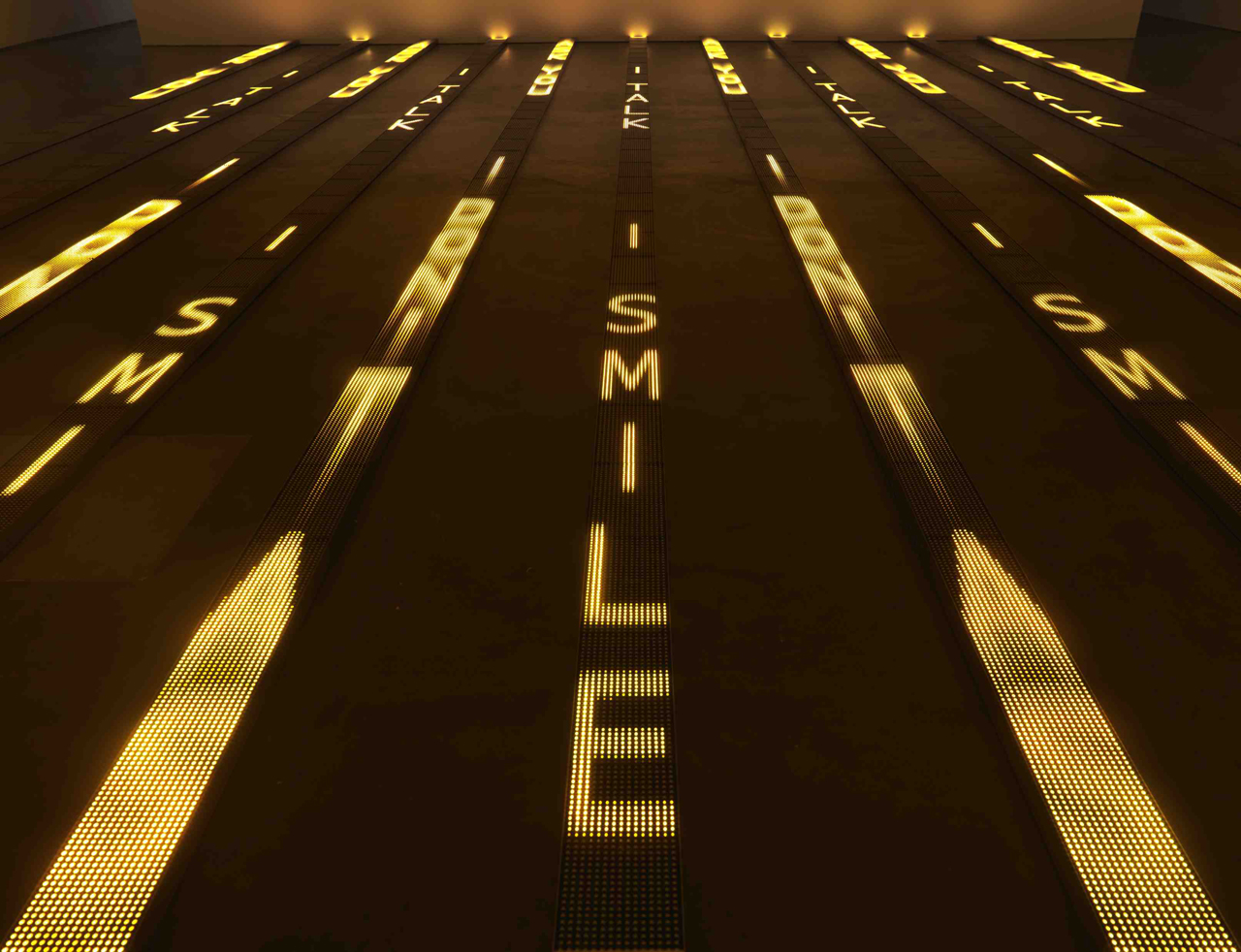
Foundation
Marc Quinn
October 5 → January 6, 2008
Gathering over forty recent works, DHC/ART’s inaugural exhibition by conceptual artist Marc Quinn is the largest ever mounted in North America and the artist’s first solo show in Canada

As part of its public engagement project Incandescences, the PHI Foundation invited four artists to come up with different interventions to reactivate its archives. Designed in conjunction with the Lee Bae: UNION exhibition, Incandescences is inspired by Bae’s use of charcoal: a substance that is the remnant of a combustion and also allows other fires to ignite. Each participating artist combines their artistic practice with tasks related to teaching, research, mediation, or administration. This dual role, which is prompted by both the artists’ desire to actively participate in the formation of a milieu and by the necessity of the tasks that must be done given the precariousness of this same milieu, also evokes charcoal—a material whose uses are as practical as they are symbolic.
The third guest of this project, Emma Haraké, has developed a practice informed by critical and participatory pedagogy, designing projects in which she engages with different communities to explore our relationships to history (and stories). The artist works as a coordinator at Concordia University’s Centre for Oral History and Digital Storytelling, while also developing projects as one of its members: this combination of the roles of coordination and creation shows the important everyday work of constituting and negotiating archives. Haraké’s proposal,Four Texts To Listen To Your Inner Voice, intersects four texts from the Foundation’s educational archive: when put together, they reveal the intersection of the intimate and the collective within the archive.

Daniel Fiset: What were the initial questions that guided your research in our Education archive?
Emma Haraké: I’m always fascinated by how objects gain value, whether it is archival, aesthetic or artistic… This was related to differences within the archive—some objects seemed expensive, technological, while others were banal, meant for a more direct use, like sponges, pencils, and crayons. Still, they were all grouped together, as part of a collection. I was also interested in all these containers, which are objects too: plastic bins, cardboard boxes, and shelves. These objects allow things to be hidden, concealed, while others are visible—they layer our experience in the archive, in a way. Finally, I also chose to understand text as an object in and of itself, which allowed other forms of access to the archive’s content. The archive was full of these things that had accumulated throughout the years, from past events. It seemed like, all of a sudden, I had access to all of these pasts. Then, finding myself in the present, I asked myself: how should I reconstruct the past from what I can find in the archive? I wanted to address the constitution of an archive: what does this collection of objects mean if we have access to it, now? If archives could speak, what would they say? What do we do as listeners of this archive? How do we narrate it?
DF: How did these questions find their way into the project that you developed?
EH: I started with small exercises of tracing, mimicking or copying objects—just as a way of acknowledging that whatever I will create will be fragmented, partial. These exercises became discrete interventions in the Education Room, where I could figure out some of the questions I had. A lot of the work was informed by the process throughout the residency. For example, I was walking from my house to the Foundation in the mornings, taking different routes. Walking became a way to reflect on the texts I encountered—I found myself reciting some of them while I was walking to the Foundation. I created a script for a listening exercise, inviting people to engage with some of these texts. I see this script as a sort of play—trying to find someone’s inner voice by interacting with other voices. This exercise is closely related to larger questions I have about the archive—the way it articulates the past, the present, and the future, or the way it blends the personal and the collective. It also allows me to draw a parallel between an archive and a voice. Our own voice is this sort of intimate, personal property; but it also enables a sort of public agency when we use it in certain contexts—just like this collection of objects in a room.
DF: How did you go about choosing which texts to include in your project?
EH: I definitely wanted to pique the listener’s interest, so that they would want to seek out the source material and pursue their reading—except with the last text, which is only a sentence long and has been included in its entirety. That sentence really resonated with me, and informed my research process. After speaking with you, I was curious about some of the projects you had worked on, like Sheena Hoszko’s workshop Bâches Bleues Against Harm (2020). I remembered you telling me that the workshop was located—meaning, that part of the activity was to reflect on the Foundation’s geographical situation in relation to carceral institutions in Québec. That is something that is often part of my process: I start a project by locating where I am in relation to what I want to address, almost like a constellation.
There was also a desire to explore different forms, and to see if we would blur the distinctions between a “historical text” and a “dialogue.” One of the texts cites an interview that was part of a bound package of print-outs, while Dorothy Williams’ text was excerpted from a book, which I had wanted to read for a while. The section I excerpted from that book speaks of a historical fact that happened nearby, in the Old Port; the hanging of Marie-Joseph Angélique in 1734. When we asked Dr. Williams for permission to cite the text, she revealed that she did not have access to Angélique’s original testimonies. I found that striking. It encompassed all these layers of storytelling, which permeate one another. In a way, the project wonders: what gets told and what gets left behind? How can we listen to these stories?
Discover Emma Haraké’s proposal forIncandescences: an audio piece narrated by the artist that calls our attention to four texts gleaned from the education archive.
Emma Haraké
Emma Haraké’s teaching, research, and creative practice move within a framework of public and critical pedagogy. Born and raised in Beirut and living in Montréal (Tio’tià:ke), Emma holds a Master’s in Art Education from Concordia University and a BFA from the Lebanese University. Her work focuses on oral history, memory work, personal narratives, and the complexities of collaborative processes. Emma is currently developing Mumtalakat, an outreach project at the Leonard and Bina Ellen Gallery exploring meanings embedded in personal objects of Arabic-speaking Montrealers. She is also the Coordinator and Community Facilitator of Concordia’s Centre for Oral History and Digital Storytelling.
To learn more about the projects of the other guest artists, please visit the Incandescences public engagement project webpage.
Author: Daniel Fiset
Daniel Fiset is a cultural worker based in Tiohtiá:ke/Mooniyang/Montreal. Holding a Ph.D. in art history from Université de Montréal, he has collaborated with numerous Quebec and Canadian institutions in the field of visual arts, including OPTICA, esse arts + opinions and the Musée d'art contemporain des Laurentides. He is currently the adjunct curator for engagement at the PHI Foundation for Contemporary Art, and curated the 2021 PHI MONTRÉAL exhibition.

Foundation
Gathering over forty recent works, DHC/ART’s inaugural exhibition by conceptual artist Marc Quinn is the largest ever mounted in North America and the artist’s first solo show in Canada

Foundation
Six artists present works that in some way critically re-stage films, media spectacles, popular culture and, in one case, private moments of daily life

Foundation
This poetic and often touching project speaks to us all about our relation to the loved one

Foundation
DHC/ART Foundation for Contemporary Art is pleased to present the North American premiere of Christian Marclay’s Replay, a major exhibition gathering works in video by the internationally acclaimed artist

Foundation
DHC/ART is pleased to present Particles of Reality, the first solo exhibition in Canada of the celebrated Israeli artist Michal Rovner, who divides her time between New York City and a farm in Israel

Foundation
The inaugural DHC Session exhibition, Living Time, brings together selected documentation of renowned Taiwanese-American performance artist Tehching Hsieh’s One Year Performances and the films of young Dutch artist, Guido van der Werve

Foundation
Eija-Liisa Ahtila’s film installations experiment with narrative storytelling, creating extraordinary tales out of ordinary human experiences

Foundation
For more than thirty years, Jenny Holzer’s work has paired text and installation to examine personal and social realities